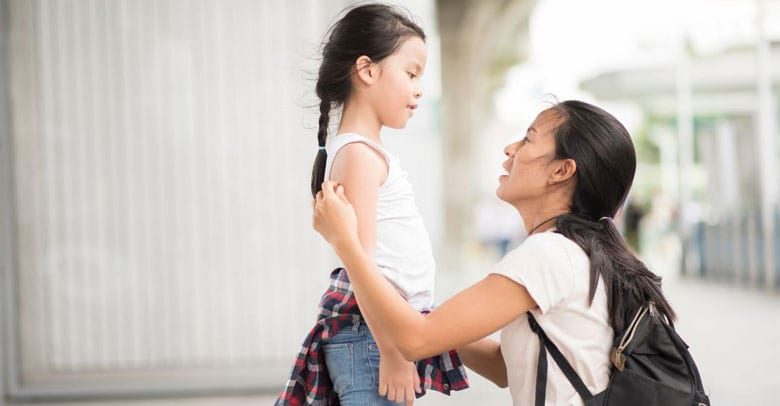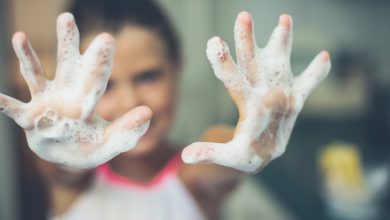“Mommy, Why Does that Person Look Different?”: Having Conversations About Diversity, Equity & Inclusion

“Mommy, Why Does that Person Look Different?”: Having Conversations About Diversity, Equity & Inclusion
Imagine you’re shopping with your toddler. You’re distracted trying to decide between two products that look identical when you hear, “Mom/Dad, what’s wrong with them?” You turn, mortified to see your child pointing at a person in a wheelchair 10 feet away.
It’s happened. Your child has noticed someone who is different and loudly pointed it out (IN PUBLIC OF COURSE), potentially embarrassing the other person while also stepping into the middle of something that most adults don’t want to think about: diversity, equity, and inclusion.
Now it’s your job to help your child navigate the situation.
We live in a diverse world filled with diverse people. Different skin colors, genders, physical and mental abilities, and ages are all parts of what make humanity so wonderful and beautiful. And most little children who make comments like the one above aren’t being malicious. (Most things that toddlers say are blunt and free of empathy no matter what.)
But this circumstance is no longer just about them. It’s about you. It’s about the person who looks different from your child. It’s about our collective effort as a human race to be loving and kind to everyone we meet.
So what do we do in situations like this? How do we navigate this painfully awkward moment?
Put on your adulting pants. Something very important — and wonderful — is about to happen.
Diversity, Equity & Inclusion
Let’s state something plainly: Appreciating diversity, standing for equity, and living inclusively are values that Little Sunshine’s Playhouse supports and promotes. We actively teach and demonstrate to our students how to be inclusive and kind to everyone, not just people who look/sound/act like they do. We believe that an inclusive world is better for everyone.
And this isn’t just an opinion. Do a search for “research on social benefits of equality and inclusion” and you’ll get entry after entry from reputable businesses, organizations, and research groups on the incredible advantages that come with living in an inclusive world. There are huge, life-changing benefits that come from living in diverse communities or working in diverse organizations.
Unfortunately, humans have to fight against the urge to exclude. Sociologists have studied and observed that people who are seen as different are often treated as “The Other.” In other words, they’re excluded, avoided, or treated differently. They can’t be a part of “our group” because of their race/gender/age/abilities.
Obviously, that kind of thinking is misguided and incorrect. We as adults have to do whatever we can to combat it in our own lives and in the lives of our children.
And that’s why the example of “my child said an insensitive thing in public” is such an important moment.
Accidental Rudeness
Kids under the age of five are totally clueless about the social structures around racial, gender-based, age-based, or ability-based issues. They just see someone who is different and want to know what’s up. (Kids as young as 3-months-old are aware of racial differences.)
And while you might be tempted to say you’re “colorblind” or that you don’t see other people’s differences … that’s not true. If a 3-month-old is aware of race, then so are the adults in their life! Ignoring differences is a way to sidestep the difficult conversations around race and diversity, and it’s really unhelpful to kids.
“The overall idea is for parents to both model and explicitly teach empathy towards all people groups and to specifically engage children in discussing these ideas using something sensory or visual,” says Rachel Love, a teacher training specialist for International Programs at Missouri State University. “When possible, include a person from that demographic in the conversation, either through books, movies, in-person events, or even with a stranger on the street.”
Pointing out someone’s differences is one thing. But let’s imagine for a moment that the way your child is talking is part of the problem. Statements that start with the words, “What’s wrong with …” or rude descriptions of other people are the stuff of nightmares for parents. The knee-jerk reaction is to scold and run away.
Instead, apologize to the other person if they’ve heard your child’s comment. Something as simple as, “I’m sorry, we’re still learning about manners,” is a great start.
But don’t forget, we need to show our child that people who are different are still people we interact with. After the apology, have a short conversation with the other person and involve your toddler.
Meg Zucker speaks on a condition she and her two sons have called ectrodactyly. They’ve experienced their fair share of insensitive social encounters, and she wants people to know that one of the worst things to do is avoid eye contact and skulk away.
“Instead of silently mouthing an apology to him and slipping away, I’d suggest that you walk over to him and introduce yourselves,” she says. “While your child may be shy and prefer to hide behind you, she’ll see you engaging the man as a neighbor and a potential friend.”
Author Courtney Westlake, whose daughter has a rare and severe skin disease, agrees. “I hope you invite us into your conversation. Instead of a steep divide that places our family on the other side with a ‘do not look at and do not talk to’ sign, I’d rather be a positive opportunity for your child to learn how to respect and appreciate physical differences.”
Set Some Ground Rules
If this is the first time your child has made a rude or insensitive comment about the way someone looks, it’s a great time to set up some ground rules. Tell them that having questions about the way someone looks is fine, but pointing, staring, or gawking isn’t kind. Instead, they can come to you and whisper their observation instead of broadcasting it to the world.
And don’t let this be the end of the conversation! It’s important to still interact with the person your child noticed so they can see how someone who is different isn’t someone that’s only whispered about.
Let’s say your child has noticed someone’s accent or different skin color while you’re at the library. Have a quiet conversation with them about how everyone’s skin is a little different and how it’s as normal as people having different eye colors. Then say, “Let’s go say hello! I’ll come with you.” As you approach, say something simple to the person such as, “My child wanted to come say hello and introduce herself. How are you today? Which books are you checking out?” Again, your example of treating the other person with kindness and civility is crucial.
Resources for Parents
One of the best ways to show kids all of the amazing different people in the world is through books. The internet to the rescue! Here are some already-curated lists that will help you have conversations surrounding race, equity, and inclusion.
- 9 Picture Books for Preschoolers that Celebrate Diversity (George Lucas Educational Foundation)
- Multicultural Children’s Books – Preschool (Colours of Us)
- Read Across America Books by Theme (National Education Association)
- Reading Rockets Themed Booklists (WETA)
- Teach Diversity with Multicultural Books for Pre-K and Kindergarten (Scholastic Parents)
- The Parent’s Guide to Teaching Kids About Diversity (Scholastic Parents)
- Why We Need Diverse Books (National Education Association)
Remember … Be Kind to Yourself!
Much of parenting requires adults to figure it out as they go along. The issues surrounding diversity, equity, and inclusion are no different. So don’t feel like you need to have them figured out before you talk about big issues like these with your kids.
“Many parents did not grow up discussing race or racism, so there is quite a steep learning curve,” says Karen Tao, an assistant professor of counseling psychology with PBS Education. “You will stumble over your words and may share wrong information. Let your child know you are still figuring out how to talk about these important topics too, that learning is a lifelong process which you are committed to and that you are so happy you get to have these conversations together.”
Together is the only way we can create a truly inclusive, kind, and loving world. Instilling that in your child — however imperfectly you might feel while doing it — is how it starts.





